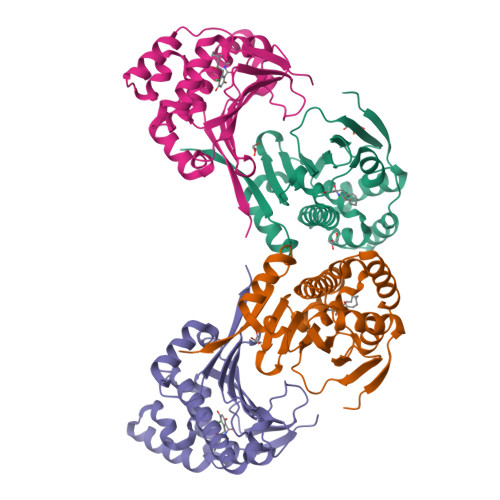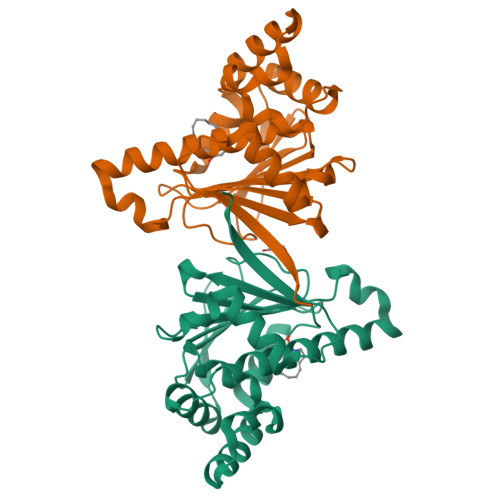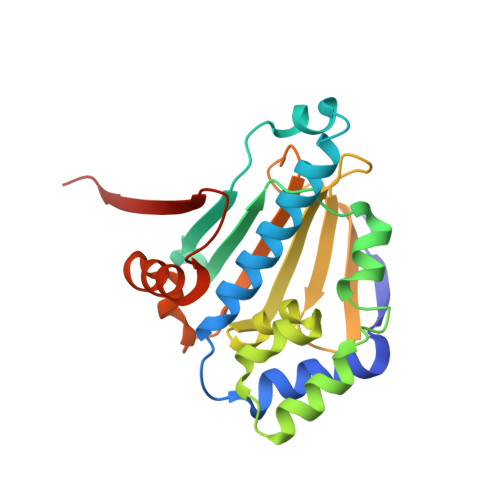Targeting the Hsp90 Molecular Chaperone with Novel Macrolactams. Synthesis, Structural, Binding, and Cellular Studies.
Day, J.E., Sharp, S.Y., Rowlands, M.G., Aherne, W., Hayes, A., Raynaud, F.I., Lewis, W., Roe, S.M., Prodromou, C., Pearl, L.H., Workman, P., Moody, C.J.(2011) ACS Chem Biol 6: 1339
- PubMed: 21932796
- DOI: https://doi.org/10.1021/cb200196e
- Primary Citation of Related Structures:
2XX2, 2XX4, 2XX5 - PubMed Abstract:
A series of resorcylic acid macrolactams, nitrogen analogues of the naturally occurring macrolactone radicicol, have been prepared by chemical synthesis and evaluated as inhibitors of heat shock protein 90 (Hsp90), an emerging attractive target for novel cancer therapeutic agents. The synthesis involves, as key steps, ring opening of an isocoumarin intermediate, followed by a ring-closing metathesis reaction to form the macrocycle. Subsequent manipulation of the ester group into a range of amides allows access to a range of new macrolactams following deprotection of the two phenolic groups. These new resorcylic acid lactams exhibit metabolic stability greater than that of related lactone counterparts, while co-crystallization of three macrolactams with the N-terminal domain ATP site of Hsp90 confirms that they bind in a similar way to the natural product radicicol and to our previous synthetic lactone analogues. Interestingly, however, in the case of the N-benzylamide, additional binding to a hydrophobic pocket of the protein was observed. In biological assays, the new macrocyclic lactams exhibit a biological profile equivalent or superior to that of the related lactones and show the established molecular signature of Hsp90 inhibitors in human colon cancer cells.
Organizational Affiliation:
School of Chemistry, University of Nottingham, University Park, U.K.



















